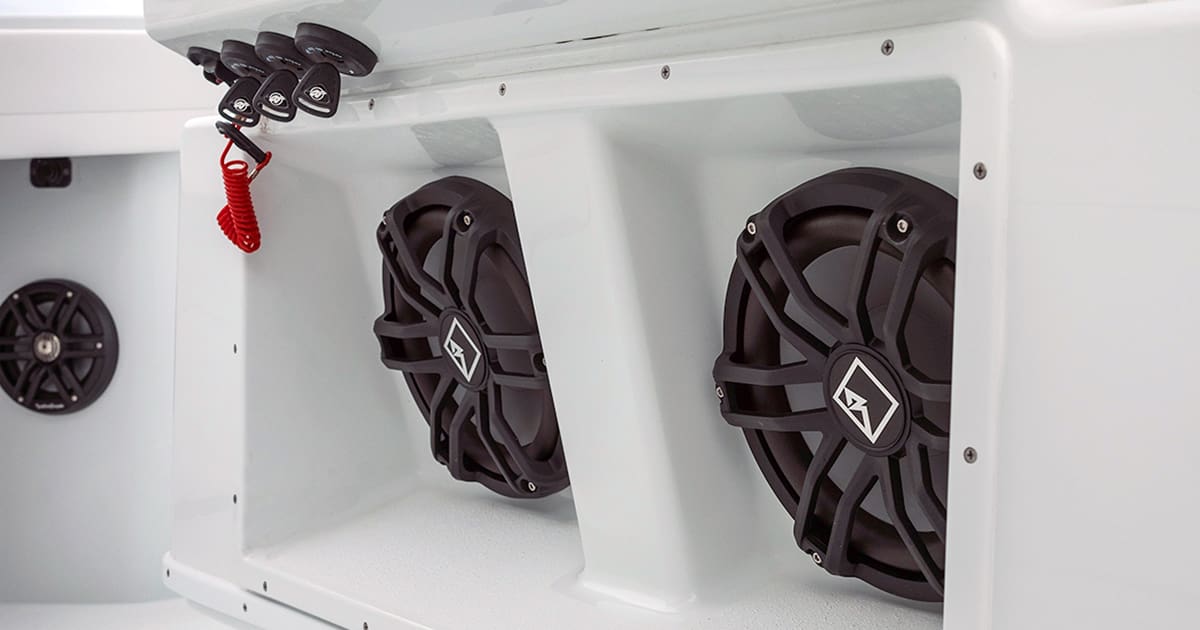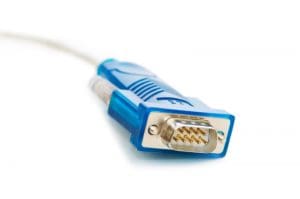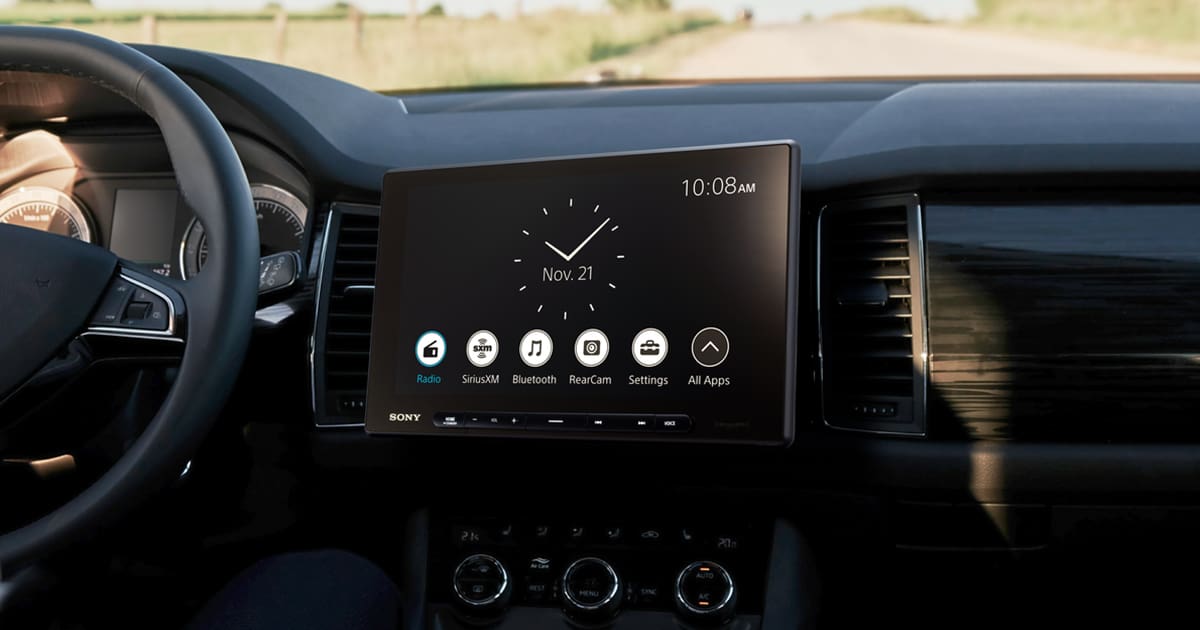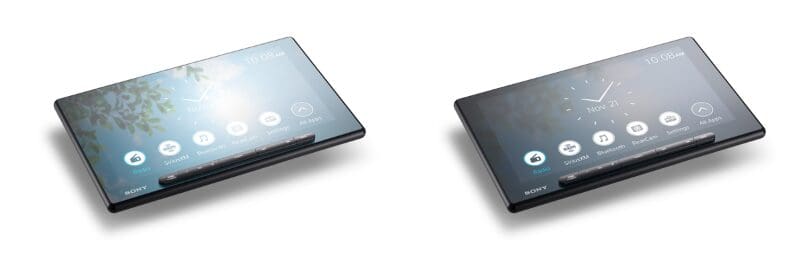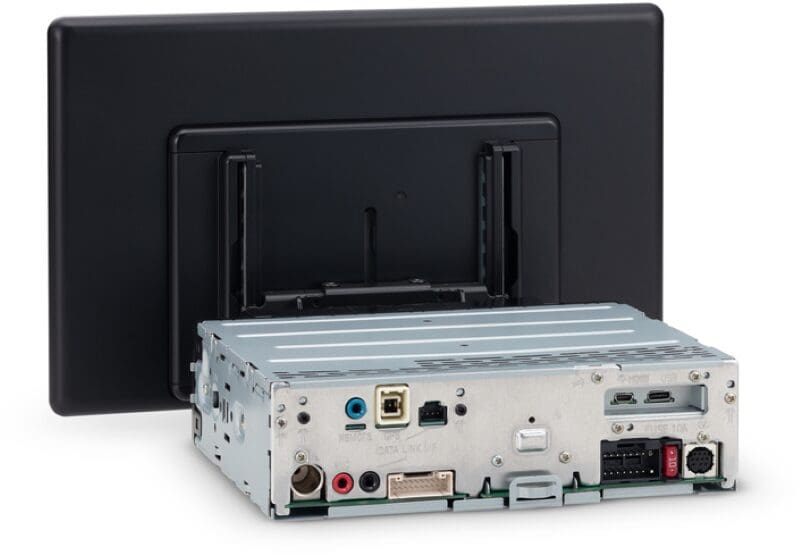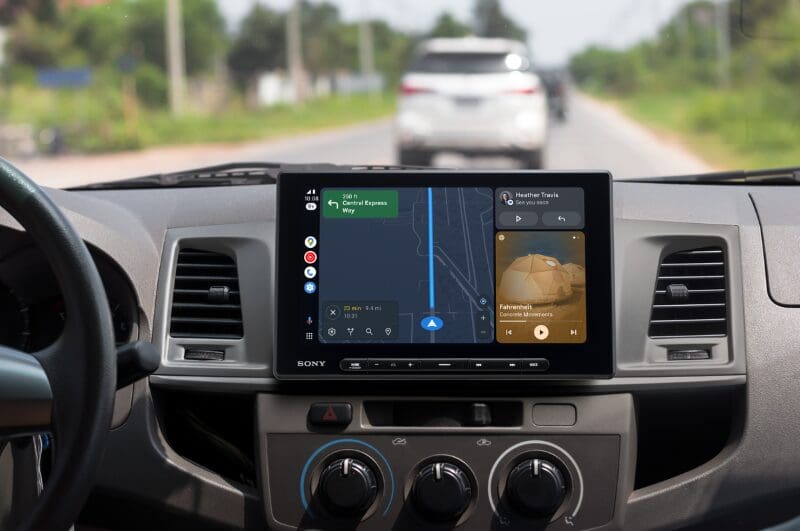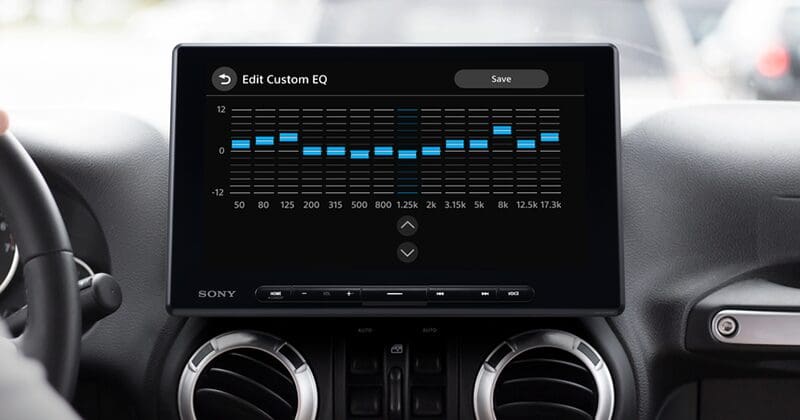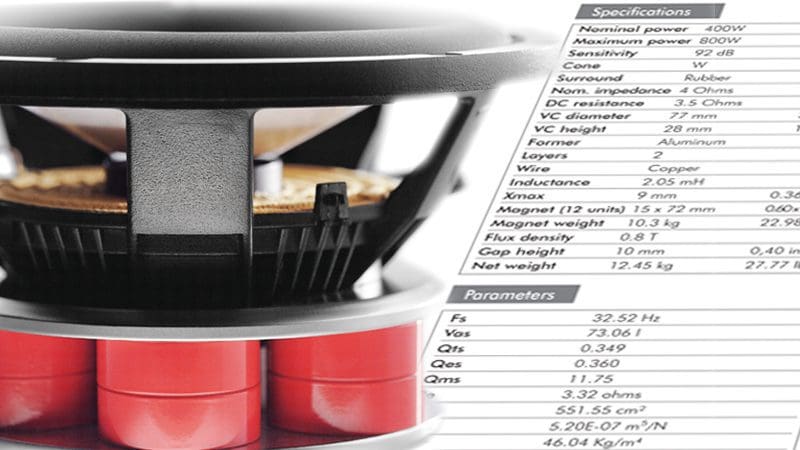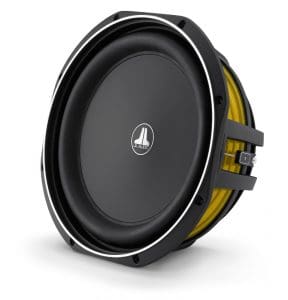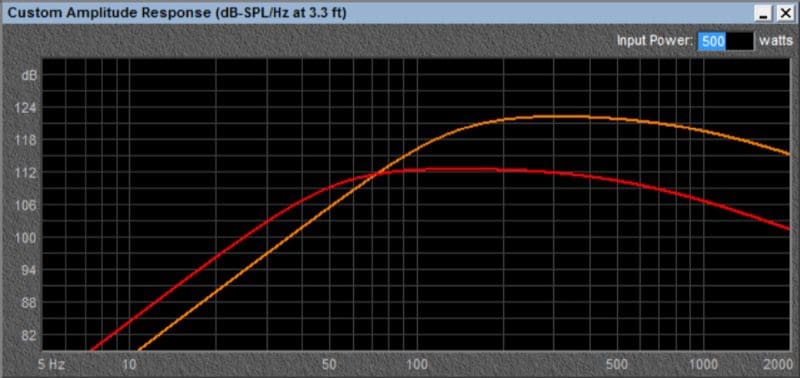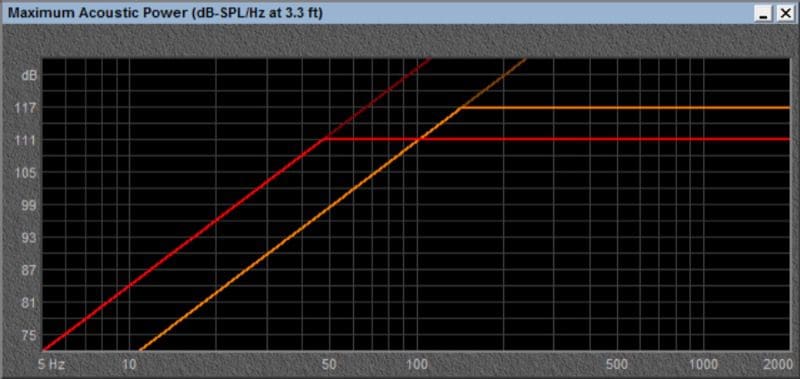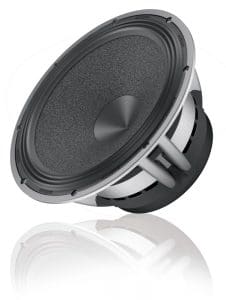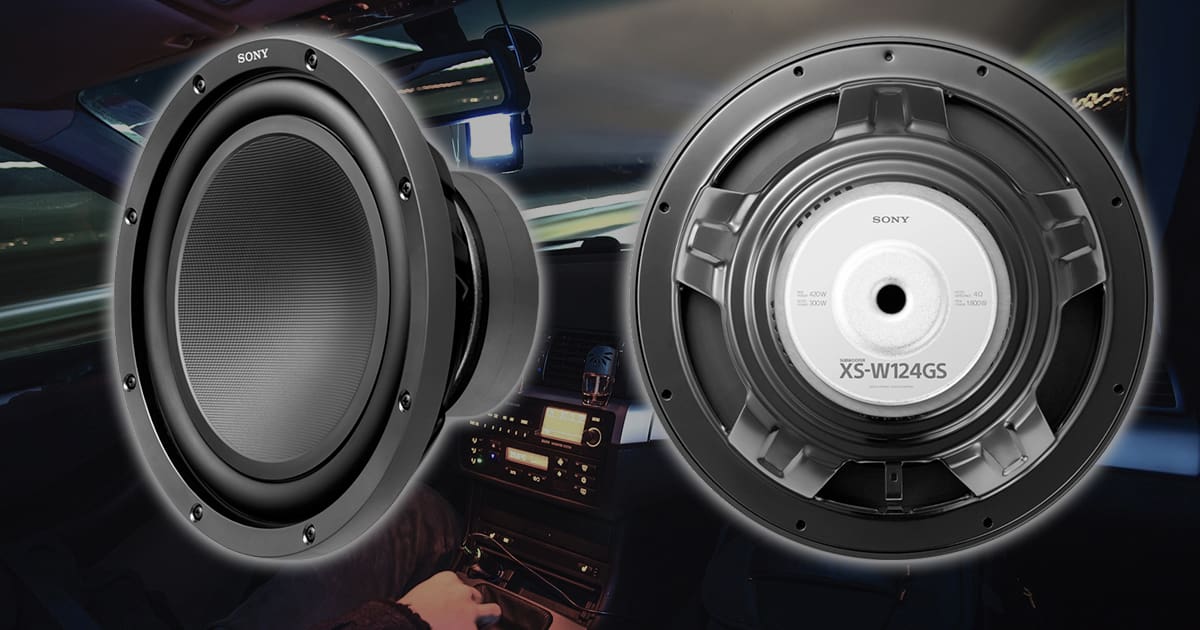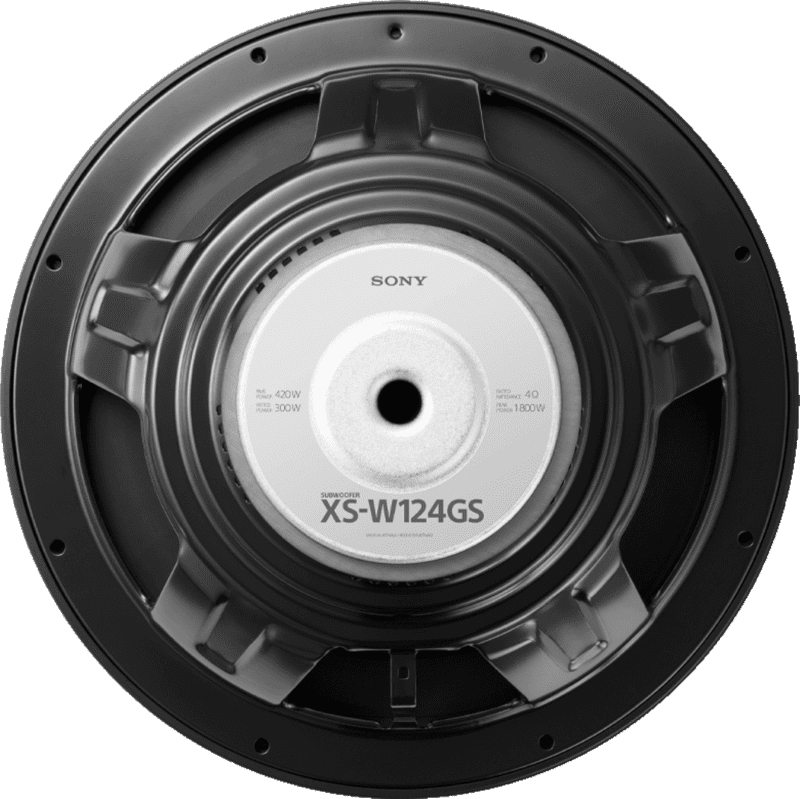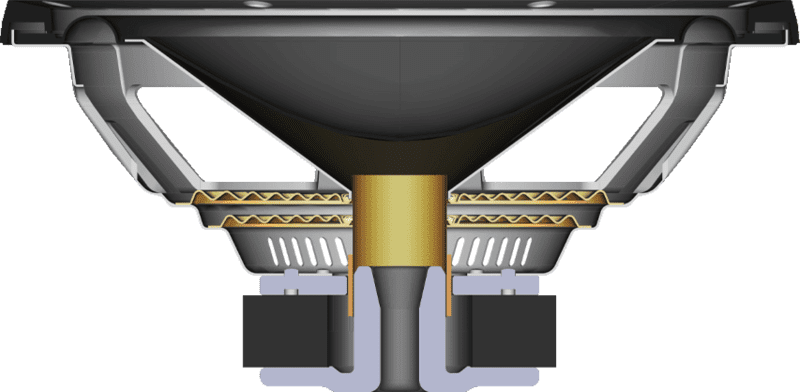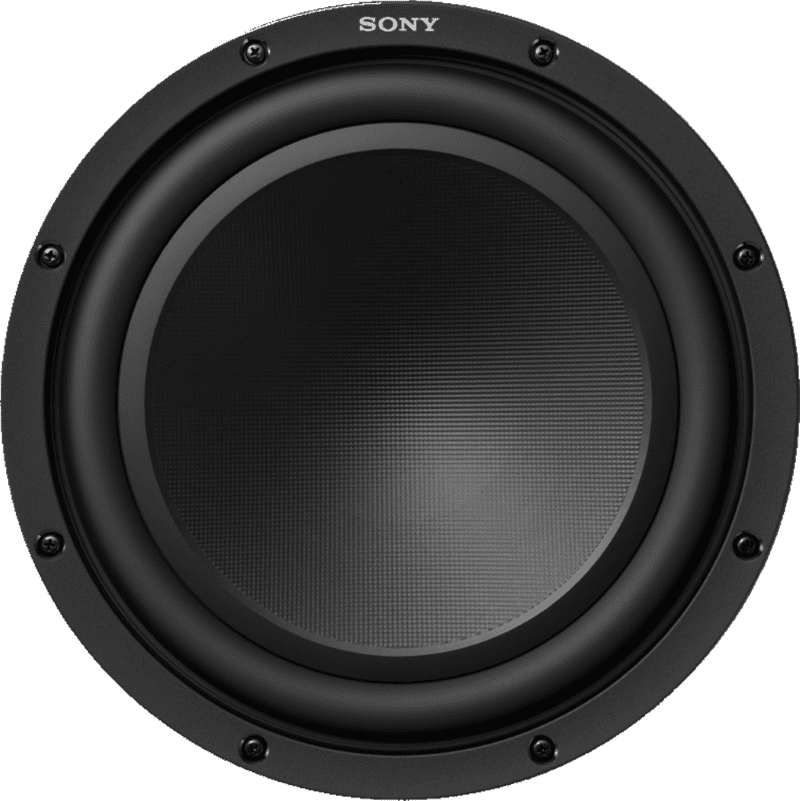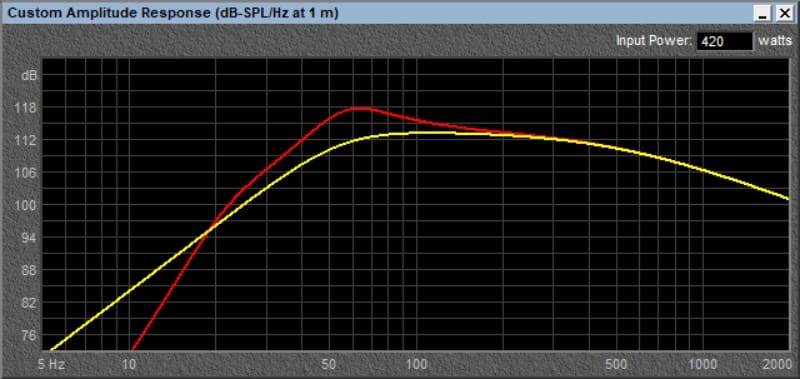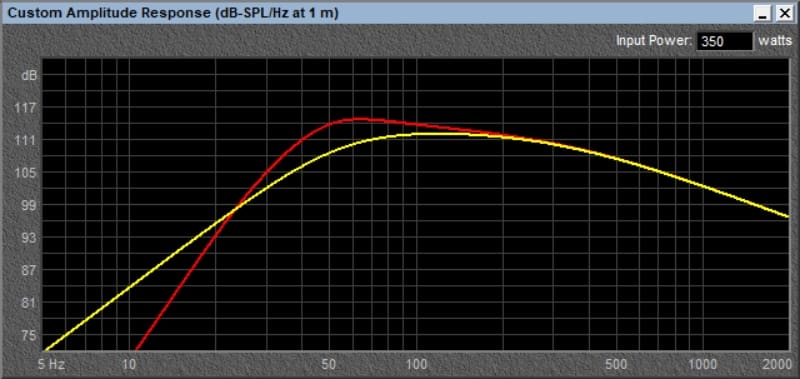When choosing subwoofers for a boat audio system, having the correct drivers for the application is crucial to designing a system that sounds good and will last for years. The marine audio fanatics at Rockford Fosgate have a subwoofer solution for every application. We will examine the 10-inch M2-Series M2D2-10I and M2D4-10I subwoofers in this spotlight.
Subwoofer Solutions for Every Application
Before we discuss the M2D2-10I and M2D4-10I subwoofers, we should discuss all available options. The M2-Series includes subwoofers for relatively small sealed or ported enclosures and the I-series for infinite baffle applications. You can choose from 10- or 12-inch woofers with dual 2- or dual 4-ohm voice coils. You can also choose from black or white “sport” grilles. All 16 different M2-Series subwoofers also include a stainless-steel grille insert so you can pick your style before installation.
The M2D2-10I is a 10-inch subwoofer with a white grille and dual 2-ohm voice coils. Its brother is the M2D4-10I, which has dual 4-ohm coils. The same drivers are available with black grilles in the M2D2-10IB and M2D4-10IB.
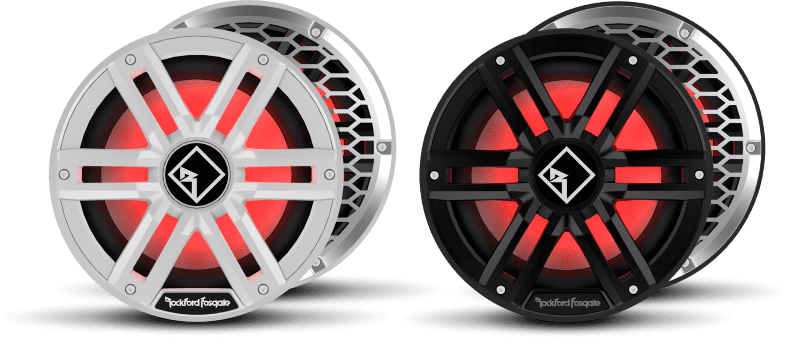
10-inch Infinite Baffle Subwoofer Specifications
The Rockford Fosgate M2D2-10I and M2D4-10I are rated to handle 400 watts of continuous power with peak power rated at 1,600 watts. The drivers have an efficiency of 90.3 dB and an Xmax specification of 11 millimeters of excursion in each direction. These subwoofers have a stiff aramid-polyester spider with a linear rate to control cone motion without an enclosure. The result is a driver that plays loudly without concerns about the woofer cone bottoming out.
Marine Subwoofer Features
These subwoofers are based around a 30% fiberglass-reinforced PA66 nylon basket. The mixture includes UV inhibitors, so the plastics won’t chalk, fade, crack or discolor when exposed to the sun. The electrical connections are made via Deutsch/Amphenol connectors with gold-plated brass terminals molded into the basket. The basket also has integrated cooling vents protected with nano-coated mesh to keep water out.
The woofer cone is made from mineral-filled polypropylene. The mineral powder adds thermal stability and improves the damping characteristics. A large 2-inch Kapton voice coil serves as the heart of the subwoofer. The tinsel leads from the voice coil to the terminals are encased in silicone to protect them from damage. Rockford Fosgate includes a VERSA switch that lets your installer quickly select between series and parallel wiring to simplify the installation. For dual 2-ohm models, the VERSA switch allows you to select between 1-ohm (parallel) or 4-ohm (series). On dual 4-ohm models, you can select 2-ohm or 8-ohm.
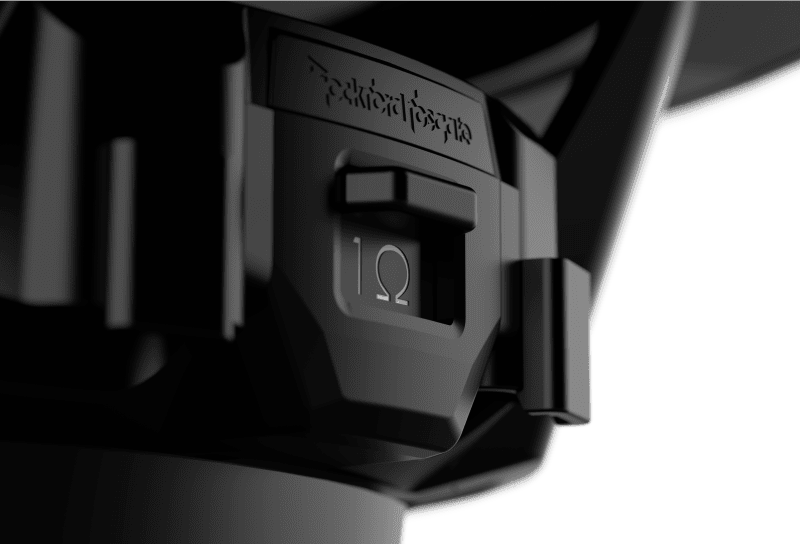
The top of the cone is bonded to a UV-stable, injection-molded foam surround. The surround mounts vertically to the edge of the basket. Rockford Fosgate calls this their Vertical Attach Surround Technique, a design that increases the effective cone area while maintaining standard mounting dimensions. The effective surface area of the M2D2-10I subwoofer is 363 square centimeters or 56.72 square inches. Popular competing products have 320 to 340 square centimeters. When it comes to optimizing efficiency, cone area matters.
Designed for Durability
The Rockford Fosgate engineering team takes reliability seriously. Their marine speakers and subwoofers pass torture tests to earn their Element Ready label. These include 500 hours of accelerated UV and salt fog testing, an IPX6 water intrusion rating and durability testing that meets the ISO60068-2-64 standard. A two-year warranty backs the M2-Series marine subwoofers against manufacturing defects.
Color Optix Integrated Lighting
Nobody can think of a wakeboard boat without thinking about style. As mentioned, you can choose from white or black sport grilles and decide whether you want the stainless inserts installed. Rockford Fosgate has integrated RGB LED lighting under the grille in a design they call Color Optix to take things a step further. You can choose from thousands of illumination colors using the RF Connect smartphone app with the optional PMX-RGB lighting controller. You can also configure color-shifting patterns if you want. Of course, the wiring for the lighting, along with the circuit boards, also meets the Element Ready requirements.
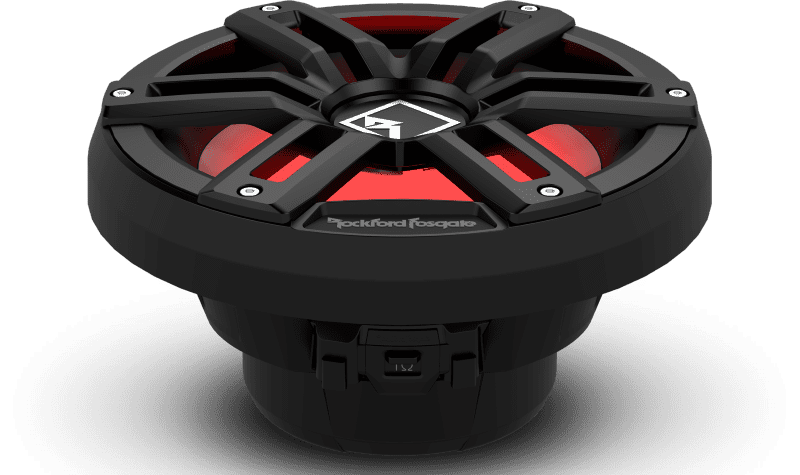
Infinite Baffle Installation Simplicity
We should clarify the definition of an “infinite baffle” subwoofer installation. This refers to mounting the subwoofer in a location where the sound coming from the back of the driver can’t mix with the sound from the front. In short, it’s like mounting the subwoofer in a wall that extends forever. In a boat, a storage locker under a seat is one of the most common installation locations. Many infinite baffle subwoofers are mounted in the podium in a center-console boat.
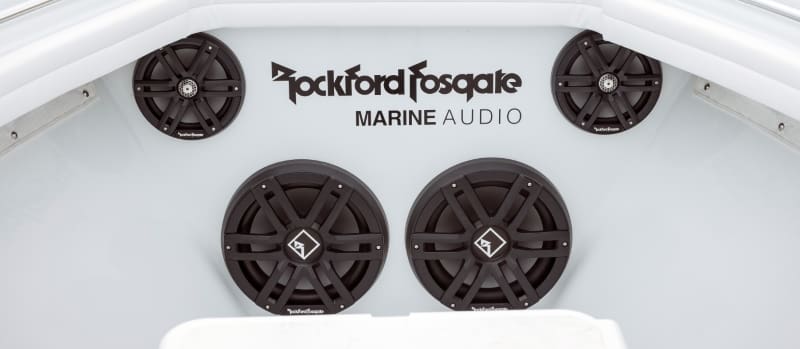
Upgrade Your Marine Audio System with Rockford Fosgate M2 Subwoofers Today!
Whether you want your marine audio system to play louder or deliver a solid kick, the Rockford Fosgate M2D2-10I and M2D4-10I infinite baffle marine subwoofers are perfect. Drop by a local authorized retailer today to discover how these subwoofers can transform your time on the water. For more information about Rockford Fosgate products, visit their website, Facebook page, Instagram feed or YouTube channel.
This article is written and produced by the team at www.BestCarAudio.com. Reproduction or use of any kind is prohibited without the express written permission of 1sixty8 media.
